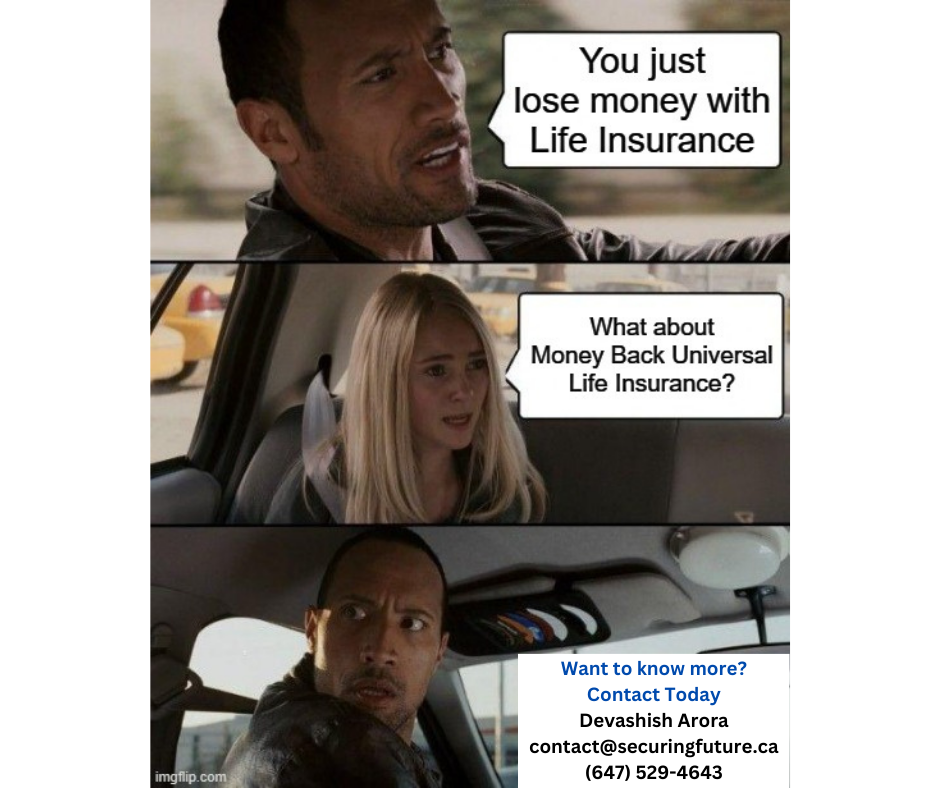Money Back Insurance
Universal life insurance is a type of permanent life insurance policy that provides both life insurance coverage and a savings component. Unlike term life insurance, which provides coverage for a specific period of time, universal life insurance provides coverage for the policyholder’s entire life.
With a universal life insurance policy, the policyholder pays regular premiums, which are invested in a savings account or investment fund chosen by the policyholder. The policyholder can choose from a variety of investment options, including stocks, bonds, and mutual funds, and the cash value of the policy grows over time.
One of the best way to design Life Insurance is to have a Term Policy to cover higher responsibilities till retirement age. And have a Universal life insurance along with it to cover partial responsibilities till retirement and estate planning after retirement. Life insurance is not one size fit all product and should be designed and purchased keeping in mind individual needs.
Example – 30 year Female named Sharon, who has a mortgage of $500k, might want to have a $500k coverage till she turns 60 and retires. After that reduced coverage might be required to meet her estate planning needs. In such a scenario it will be advisable to have a Term Policy of $400k for 30 years and add a Universal Life Insurance of $100k. Once she reaches 60 years of age the Universal Life Insurance can be reduced to meet her reduced insurance needs. This requirement can be met with monthly premium of $72. In 30 years, total premium paid would be approximately $26k and that will be the approximate surrender value of the policy calculated at 6% return on the invested funds. After 30 years, Sharon can surrender the policy and get $26k she has paid in premium over 30 years.
Else if she wants to retain reduced coverage, she can choose not to surrender and leave the funds invested, these will be enough to maintain her coverage till end of life. She won’t be required to pay any more premiums after initial 30 years. As the invested funds grow her coverage will grow, all this with no premiums after initial 30 years. At age 70, 10 years after she stopped paying premiums her death benefit would be approximately $92k. At age 80, 20 years after she stopped paying premiums her death benefit would be approximately $119k. At age 90, 30 years after she stopped paying premiums her death benefit would be approximately $151k. At age 100, 40 years after she stopped paying premiums her death benefit would be approximately $246k.
To summarize the example, $26k paid over 30 years will give a death benefit coverage of $500k for 30 years. After 30 years, Sharon can surrender her policy and get approximately same amount as what she has paid, considering a 6% return on her selected funds. Or she can choose not to pay any more premiums and continue with Universal Life Insurance.
One of the key features of universal life insurance is its Flexibility. The policyholder can adjust the death benefit, premium payments, and investment options over time to meet their changing needs. For example, if the policyholders want to increase their coverage, they can do so by increasing their premium payments or investing more in the savings account.
The money-back feature of universal life insurance refers to the policy’s ability to return some or all of the premiums paid by the policyholder over the life of the policy. This feature is typically available after a certain number of years, and the amount returned will depend on the policy’s performance.
The amount of money returned to the policyholder may be tax-free, depending on the policy’s structure and the amount of premiums paid. This can provide a valuable source of income or a lump-sum payment that can be used to meet the policyholder’s financial needs.
As mentioned before, Life insurance is not one size fit all product and should be designed and purchased keeping in mind individual needs. Contact Us today for personalized Life insurance designed specifically for your requirements.

